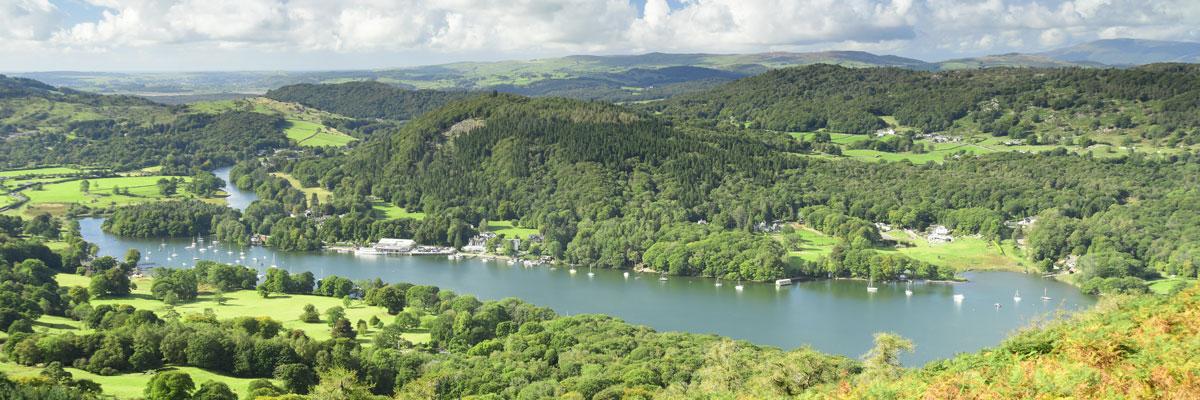With the arrival of the railway at Windermere in the late 1840s, travel to The Lakes suddenly became a lot easier. Not only did this start a new age of tourism for the area, but also a wave of building large holiday homes for wealthy business men. One area which was particularly favoured for this was the eastern shores of Windermere, with many of the houses built in the Arts and Crafts style. One excellent example is Blackwell, which stands on a hillside just south of Bowness; the building is open to the public and doubles up as an art gallery.
In 1869 a second railway arrived at Windermere, this time at Lakeside, at the very southern end of the lake. It was built by the Furness Railway Company, and connected with the main rail network near Ulverston. Although the line carried a lot of freight, including bobbins from the Bobbin Mill at Stott Park, it was also built with the intention of bringing tourists to the lake for boat trips. The line closed in the 1960s, but 3½ miles of track was preserved and re-opened in May 1973 as the Lakeside and Haverthwaite Railway. This is run as a steam railway, and keeps its historic link with Windermere Lake Cruises at Lakeside.
One wealthy industrialist who took advantage of the new transport links was Henry Schneider. Schneider had made his money from the iron industry at Barrow-in-Furness, and was co-founder of the Furness Railway; his daily commute to work in Barrow took that relatively new concept to a whole new level. He lived at Belsfield House, a huge mansion overlooking Bowness Bay, now the Belsfield Hotel. The first stage of the 22 mile journey was to take his personal steam yacht The Esperance down to Lakeside, enjoying breakfast en route. At Lakeside he transferred to the train, travelling in his private carriage to his offices in Barrow. Schneider played a vital part in developing Barrow, and four years after his death his statue was erected in the town.
Just across the foot of Windermere from Lakeside rises Gummer’s How. Although less than a third of the height of Lakeland’s highest mountains, Gummer’s How is the highest point for several miles around, giving it wide-ranging views over Windermere and the gentle, rolling hills of the south-eastern Lakes. It is a fairly easy climb from the top of the steep little lane of Fell Foot Brow where there is a good parking area.
East of Gummer’s How are two of Lakeland’s quieter valleys, the Winster Valley and the Lyth Valley. There are no lakes or high mountains here, giving both valleys a very different feel to the classic landscapes of the Lake District. In fact, with the limestone escarpment of Whitbarrow separating the two valleys, there is perhaps more in common with the Yorkshire Dales here. One curious feature can be found below the crags of Whitbarrow in the tiny hamlet of Beck Head; here a stream emerges from below a limestone crag, a miniature version of Malham Cove.
The Lyth Valley is famous for its damsons, a fruit related to plums but smaller and hardier, and a popular ingredient in jams and chutneys, and for flavouring gins. Damsons are celebrated every year in the valley with Damson Day, a festival held in the Spring when the trees are in blossom.
At the north end of the Lyth Valley near Crook are the remains of St Catherine’s Old Church which stands on a little rocky hill just west of the village. Dating to the early 17th Century, the building became unstable and was demolished in the 1880s. A new church was built nearby, but the bell-tower survived, still standing on its little hill.

